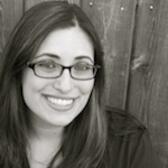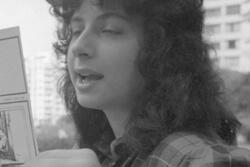Putting Jewish Women On the Map
Today marks the beginning of Women's History Month. The official theme of Women's History Month 2010 is "Writing Women Back into History," which I find somewhat amusing since that is the official theme of every day at the Jewish Women's Archive. Not to be contrary, but we at JWA have been working on a different theme for this month: "Putting Jewish Women on the Map."
"Writing women into history" implies that history is something written--something that exists on paper, in books, or on the internet. This is partially true, but history does not reside only on the page, in the intellectual abstract or literal memory. History also has a physical presence. It is connected to material places and tangible spaces. The spot on which a historical event occurred becomes meaningful, and the physical act of standing on that spot (a Civil War battlefield, the entrance to Auschwitz) can often evoke a deep, emotional experience of history. This is why we make pilgrimages, take guided walking tours, and consider field trips a valuable part of learning.
There is a human desire to connect with history in a physical way, one that also compels us to build monuments and memorials to mark history. These physical markers, like written history, reflect society's interpretation of historical events and commemorate the stories considered important by the people who built them. It is interesting to think about the sorts of events, and the sorts of people, memorialized by monuments, plaques, statues, signs and buildings. Which stories are recognized by physical markers, and how?
It is important to make sure that the stories of Jewish women are written into the larger story of Jewish history in America, but it is also important to think about the presence of Jewish women in physical history. What sites and monuments are important to Jewish American history, and how many of them tell the stories of Jewish women?
A few weeks ago I tweeted about this, asking if people could think of monuments or sites dedicated to Jewish women. I received some good examples, like Emma Lazarus' "The New Colossus" on the Statue of Liberty, a bust of Fanny Brice in the Ziegfeld Theater, and some interesting questions about whether Hollywood stars or wax museum figures should count as monuments.
From those initial tips and a Flickr search of JWA's Women of Valor, I put together this gallery of sites and monuments commemorating Jewish women. But this is only the beginning. We need your help to locate and document other significant sites and markers.
What sites, memorials, and monuments do you know of that recognize Jewish women or important events in Jewish women's history? Let us know in the comments, or add a photo to our Flickr group pool. Stay tuned this month to find out you can help JWA with an innovative project that will put Jewish women "on the map."






